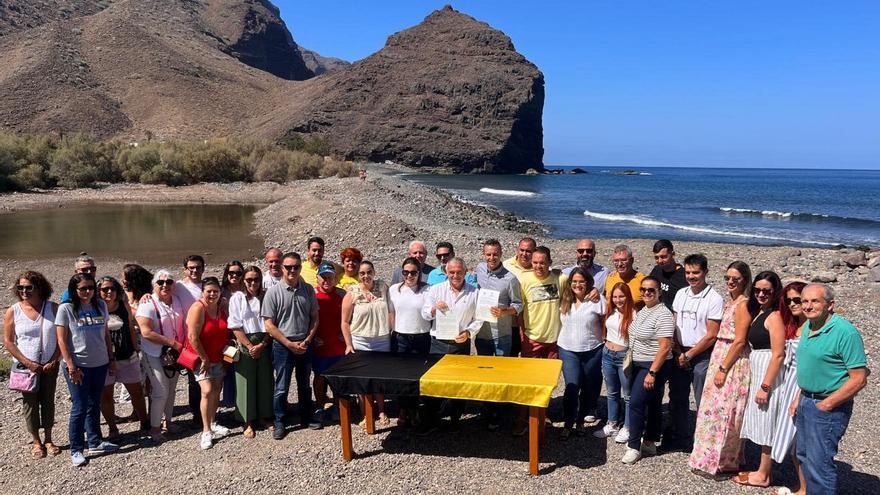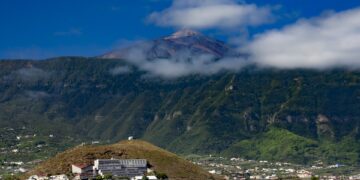
The municipal map that leaves the elections of May 28 is more plural than that of four years ago. Although the PSOE continues to be the formation with the most councilors in the 88 Canary Islands municipalities, the number of mayoralties it holds has decreased compared to 2019 -from 35 to 26- and, on the other hand, the number of corporations with local force councilors has increased , insular or from minority parties, up to 19 town councils, by virtue of pacts or majorities emerging from the elections. Canary Coalition maintains its municipal power practically intact with 20 mayors, the PP increases its municipal presence with 16 batons of command and Nueva Canarias also remains at the head of seven municipal governments.
The socialists have 406 councilors in the Islands, slightly below what was achieved in the 2019 electoral appointment, in which it obtained 415 councilors. It is the CC that achieves a significant increase in councilors compared to four years ago, with 76 more councilors, from 228 to 304. In this way, the nationalists become the second municipal force in the Archipelago against the PP, which becomes the third formation with 262 councillors, a smaller increase than that of CC. Nueva Canarias (NC) also slightly increases its councilors with 118 compared to 102 in 2019. Agrupación Socialista Gomera (ASG), for its part, manages to be the fifth force in number of councilors, with a total of 36, above Vox which got 34.
But having more councilors does not mean winning the Mayor’s Office. The Socialists continue to dominate the municipal baton but their power is reduced after the magnificent results they obtained four years ago, historic elections for the PSOE because they not only won in 35 town halls, but also in four councils and in Parliament, which enabled them to reach the Government of the Canary Islands. Then would come the motions of censure -like the one in Santa Cruz de Tenerife- or the political crises due to the island struggles, such as the one that left him without the presidency of the Cabildo de Fuerteventura. Waiting for some more surprise tomorrow in the constitution of the municipal corporations, the Socialists reduce the mayoralties that they obtained in the previous elections and have 26, once again becoming the force with the most municipalities on the island of Tenerife, while in the rest of the islands it loses presence, especially in Gran Canaria, Fuerteventura and El Hierro.
The pacts sponsored by CC and PP or other political formations leave the PSOE without options in several town halls despite being the formation with the most votes. It is the case of Teguise, Arrecife, La Aldea, Villa de Mazo, Santa Cruz de Tenerife, Arona, Guía de Isora or San Juan de la Rambla. The Socialists retain 20 absolute majorities after the results of 28-M, being the party with the most solid majorities in the municipalities, especially in the western province. Of the four most inhabited municipalities, the Socialists win in three but will govern in two -Las Palmas de Gran Canaria and La Laguna-, they are second in the opposition in Telde while in the capital of Tenerife the CC-PP pact again evicts Patricia Hernández of the mayor’s office The municipalities where the PSOE is going to govern but without having won are Firgas, with a quadripartite that leaves the winner in opposition, Comfir-NC, and Tazacorte, also in similar circumstances. In other municipalities the socialists will co-govern, the case of several in Fuerteventura thanks to the alliance with CC, Teror, Santa María de Guía, Santa Brígida or La Guancha.
Canarian Coalition consolidates its municipal power and advances in Fuerteventura, La Palma and Tenerife but his great pending issue continues to be Gran Canaria where he did not get mayoralties, although in Mogán the mayoress Onalia Bueno (Together for Mogán) has shown his support for the nationalist formation. In Lanzarote, she retains Teguise despite winning the PSOE, although with the controversial support of the only Vox councilor if there are no surprises in the constitution of the Corporation. On the Majorera island she recovers the capital, Puerto del Rosario, La Oliva and Tuineje, while in La Palma she borders on Los Llanos depending on what happens at the last minute when the plenary is constituted.
In Tenerife, the nationalists retain their usual squares but the PSOE seizes the fort of Guía de Isora, a socialist domain for more than two decades, in addition to maintaining the capital of Tenerife thanks to the support of the PP.
Increase
The PP also increases its municipal presence and obtains the command baton of 16 municipalities, three more than in 2019. The popular ones are left without mayoralties in Fuerteventura after consummating the pact between CC and the PSOE on the island, El Hierro and La Gomera. However, in Gran Canaria it recovers San Bartolome de Tirajana and La Aldea, in La Palma the capital of the island, as in Lanzarote, while in Tenerife it gets the tourist place of Arona.
Nueva Canarias (NC) slightly increases its number of councilors but they will hold the Mayor’s Office in their usual municipalities of Gran Canaria, adding Ingenio, while losing the only one it had outside the island, that of Tacoronte in Tenerife, in which a pact of the rest of the forces leaves Daniel Díaz out. The southeast belt of Gran Canaria will have NC mayors in Ingenio, Agüimes and Santa Lucía, in addition to the Gáldar and Guía squares. To the two municipalities in the northwest of Gran Canaria, this mandate is added to the town of Agaete, where NC, under the acronym of Teodoro Sosa’s BNR, takes over the Mayor’s Office thanks to a pact with the PSOE, leaving the PP without options.
Those that are making their way more strongly are the local, insular or independent parties that are also increasing their presence in 19 municipalities where their candidates will take up the Mayor’s baton tomorrow. The island where the political fragmentation is greatest is Gran Canaria, which reduces municipal power to the rest of the parties, in such a way that the fourth municipality in inhabitants of the Canary Islands, Telde, will be governed by Ciuca, a party that was previously insular in scope but which has now been reduced to the city of the faycanes after Onalia Bueno left in Mogán. Ciuca’s victory in Telde has taken the other formations in the municipality by surprise and ends the dominance of NC in recent terms.
Mogán (Together for Mogán), Tejeda (Association of Electors of Tejeda), Santa Brígida (United by Gran Canaria and Ando Sataute), Valsequillo (Asba) and San Mateo (Unión Veguera) They are the rest of the Gran Canaria municipalities that will have a mayor of local formations.
The smaller islands have their own political idiosyncrasies. In La Gomera, Casimiro Curbelo’s ASG will govern five of the six municipalities on the island, since only Alajeró is still in the hands of the Socialists. In El Hierro, Valverde will be in the hands of the Asamblea Herreña, Frontera belongs to the Agrupación Herreña Independiente (AHI), while El Pinar continues to be socialist. In Tenerife, outside the domain of the three great political formations, only Santa Úrsula (Aisu), Icod de los Vinos (Aicod) and El Rosario (IR-Los Verdes) They will have mayors of local forces.
















